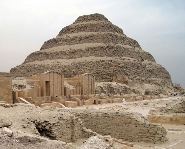

|
|
|||||||||||||||||||||
|
2181 BC
|
2040
|
1782
|
1570
|
1070
|
525
|
332
|
30 BC
|
|
|||||||||||||
|
|
|||||||||||||||||||||
|
|
|
||||||||||||||||||||
|
|
|||||||||||||||||||||
|
|
|||||||||||||||||||||
|
First intermediate Period
A precursor of shabtis is probably a small human-shaped figurine crudely made of wax that was found,
complete with its own miniature wooden coffin, in the necropolis at Saqqara. It
dates from the First Intermediate Period, 9th Dynasty (c. 2160-2040 BC). No
other figures have been found from this Period
(1).
Wax was considered to have had magical powers associated with protection, and
because of its green colour, resurrection. However, its use was extremely short
lived perhaps on account of its fragile nature.
The concept of the shabti also seems to have derived from wooden servant statues that were placed in tombs
from the end of the Old Kingdom. These figures were primarily concerned with
the production of food and include brewers, bakers and butchers. However, they
also undertook agricultural duties such as grinding corn, ploughing, reaping
and sowing of grain.
Very often complete models scenes have been found in tombs, complete with a
group of servant statues busy with a particular task.
|
|
||||||||||||||||||||
|
|
|||||||||||||||||||||
|
1. The great Step Pyramid at Saqqara was erected around 2630 BC for king Djoser (c.
2668-2649 BC) which dominates the great necropolis at Saqqara. A crude wax
figurine contained within a miniature wooden sarcophagus found in the Saqqara
necropolis may represent the earliest known
shabti dating from the 9th Dynasty (c. 2160-2040 BC). This figurine is now the
Metropolitan Museum of Art, New York.
|
|
||||||||||||||||||||
|
|
|||||||||||||||||||||
|
|
|
|
|
|
|
|
|
|
|
|
|
|
|
|
|
|
|
|
|
|
|




























